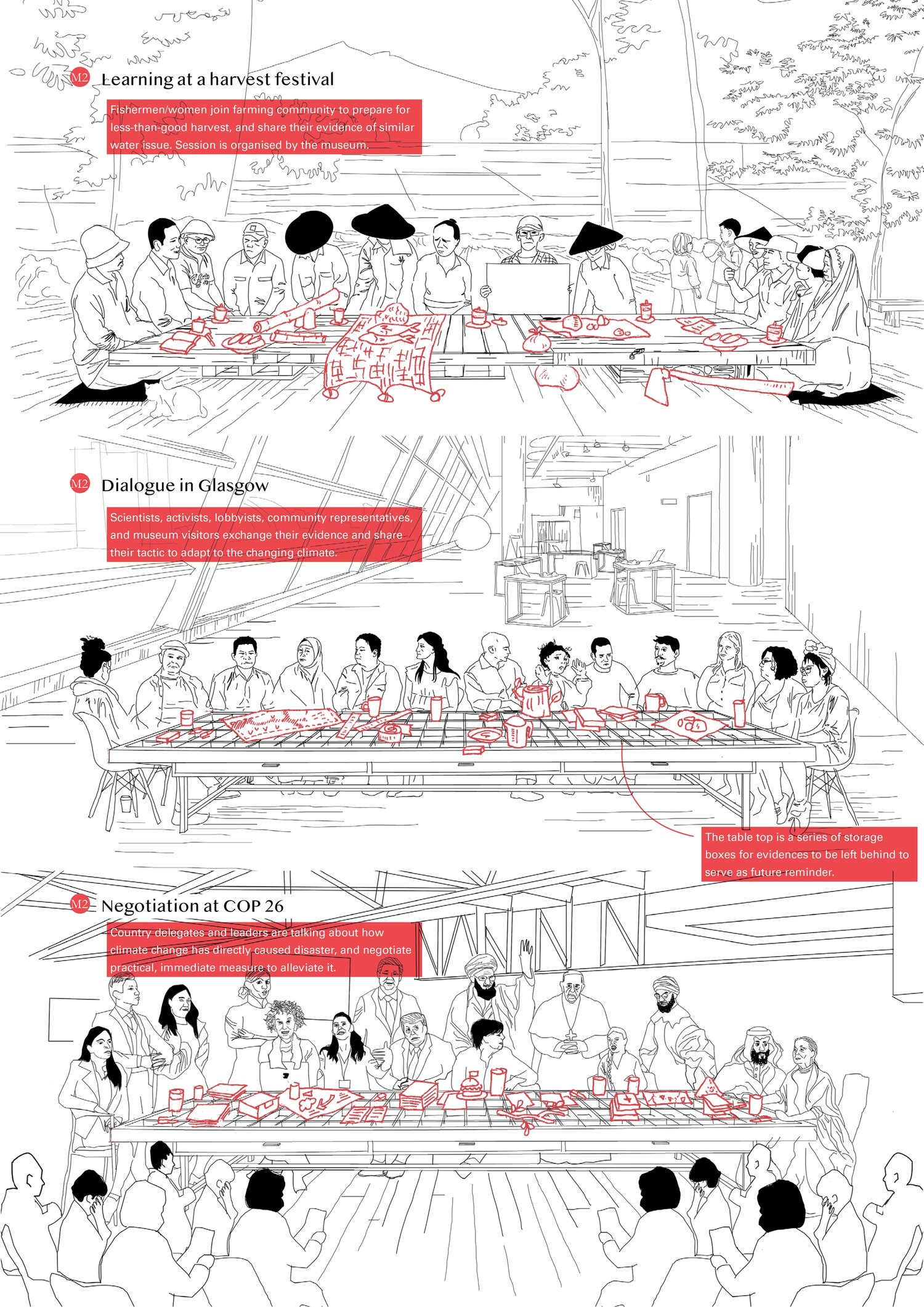What if people gathered their own collections and information to support dialogue and climate action?
A Series of Collective, Non-statistical Evidence
( Exhibit )
Climate policies and plans are often made up of statistics and numbers. These can seem a long way from the lives of most people, especially people who are poor or marginalised, as they have very little say over decisions. Yet, climate change is also personal. The body can feel its effects through hunger, or worry over crop failure. Climate change leads to despair through the loss of earnings. It is these effects on people that can be considered as climate evidence, and a basis for decision-making.
‘A Series of Collective, Non-statistical Evidence’ imagines a kind of museum that is not located in a building, separate from the rest of society. Instead, museum activities of collecting, interpreting and story-telling are carried out in communities, led by local officials, traditional elders, co-operatives, labour groups and community groups. Their meetings and meeting places can be activated as a new kind of museum for climate justice, fostering dialogue and personal experiences, and concerns relating to climate change and climate action. Through this exchange, climate action becomes an act of collective solidarity.


A Series of Collective, Non-statistical Evidence original concept visual
- Project Team
- pppooolll: Kamil Muhammad, Haidar El Haq, Amelia M Djaja, Gregorius Jasson, Ken Fernanda
- Project Name
- A Series of Collective, Non-statistical Evidence
- Team Location
- Jakarta, Indonesia